TEN YEARS AGO TODAY: COMPLETE TEST OF THE 2013 SUZUKI RM-Z250
Q: FIRST AND FOREMOST, IS THE 2013 RM-Z250 BETTER THAN THE 2012 RM-Z250?
A: To be precise, a better question would be “Is the 2013 RM-Z250 better than the 2011 RM-Z250.” Why? Suzuki didn’t make any major changes to the RM-Z250 in 2012. Aside from a fuel-pump assembly material update, shorter breather hose, new graphics and a red stripe extending the length of the seat cover, the bike was untouched.
Perhaps you’ll recall that the unchanged 2012 Suzuki RM-Z250 finished second place in MXA’s 250 four-stroke shootout. That’s saying something, considering the fact that every other manufacturer dug into their R&D budget to make changes. Yes, the RM-Z250 was that good of a machine! And yes, the 2013 RM-Z250 is better than the 2012. How so? Suzuki targeted the problem areas (i.e., transmission, suspension and tires) of the previous models and remedied the maladies.
Q: HOW MANY CHANGES WERE MADE TO THE 2013 SUZUKI RM-Z250?
A: We could simply answer the question by saying, “A lot.” However, techno geeks will want to know more. Here goes:
(1) Engine. The engine gets a revised piston, connecting rod and piston pin, as well as updated intake and exhaust cams. The newly designed piston and piston pin were developed using Finite Element Method analysis. The piston is 3 percent lighter without any compromise to strength and integrity. Additionally, the crankcase reed valve has been revised for more efficient lubrication. The new oil strainer has a stronger magnet to capture contaminants from the engine oil.
(2) Transmission. We’re happy to report that the 2013 RM-Z250 comes equipped with a new five-speed transmission. The gears and shift cam have been revised for smooth, precise shifting and a different clutch-release cam shape for improved clutch feel.
(3) Couplers. Just like the Kawasaki KX250F, the Suzuki RM-Z250 has three electronic fuel-injection map couplers that allow you to quickly adjust the fuel setting to suit various riding conditions. There are stock, rich (soft) and lean (aggressive) couplers.
(4) Forks. Suzuki has jumped on the Showa Separate Function fork (SFF) bandwagon. The right leg holds the spring, while the left leg incorporates the cartridge assembly to manage the damping. The SFF design reduces friction, increases absorption and weighs less, resulting in decent performance over a variety of track conditions. The fork’s inside tube diameter has been increased from 47mm to 48mm to further improve stability. The spring preload is now adjustable, which allows a wider range of adjustment for any level of rider.
(5) Shock. Naturally, the rear suspension features a Showa piggyback shock with setting changes to best match the front fork changes.
(6) Frame. The frame and seat rail have been refined for optimized rigidity balance. The result is improved balance for enhanced handling and stability.
(7) Exhaust. The redesigned exhaust system meets new FIM sound limits while increasing mid- to high-rpm power delivery. The new muffler body uses conventional bolts in the end cap instead of rivets to simplify the replacement of the glass-wool packing.
(8) Radiators. The RM-Z250’s cooling efficiency is increased thanks to redesigned radiator fins and all-new water-hose routing. The RM-Z250 also features a new bypass hose routing to simplify occasional radiator maintenance.
(9) Ignition. There is a new ECM with higher processing performance and a new high-power ignition coil.
(10) Tires. Suzuki spec’ed Dunlop MX51-series front and rear tires for 2013.
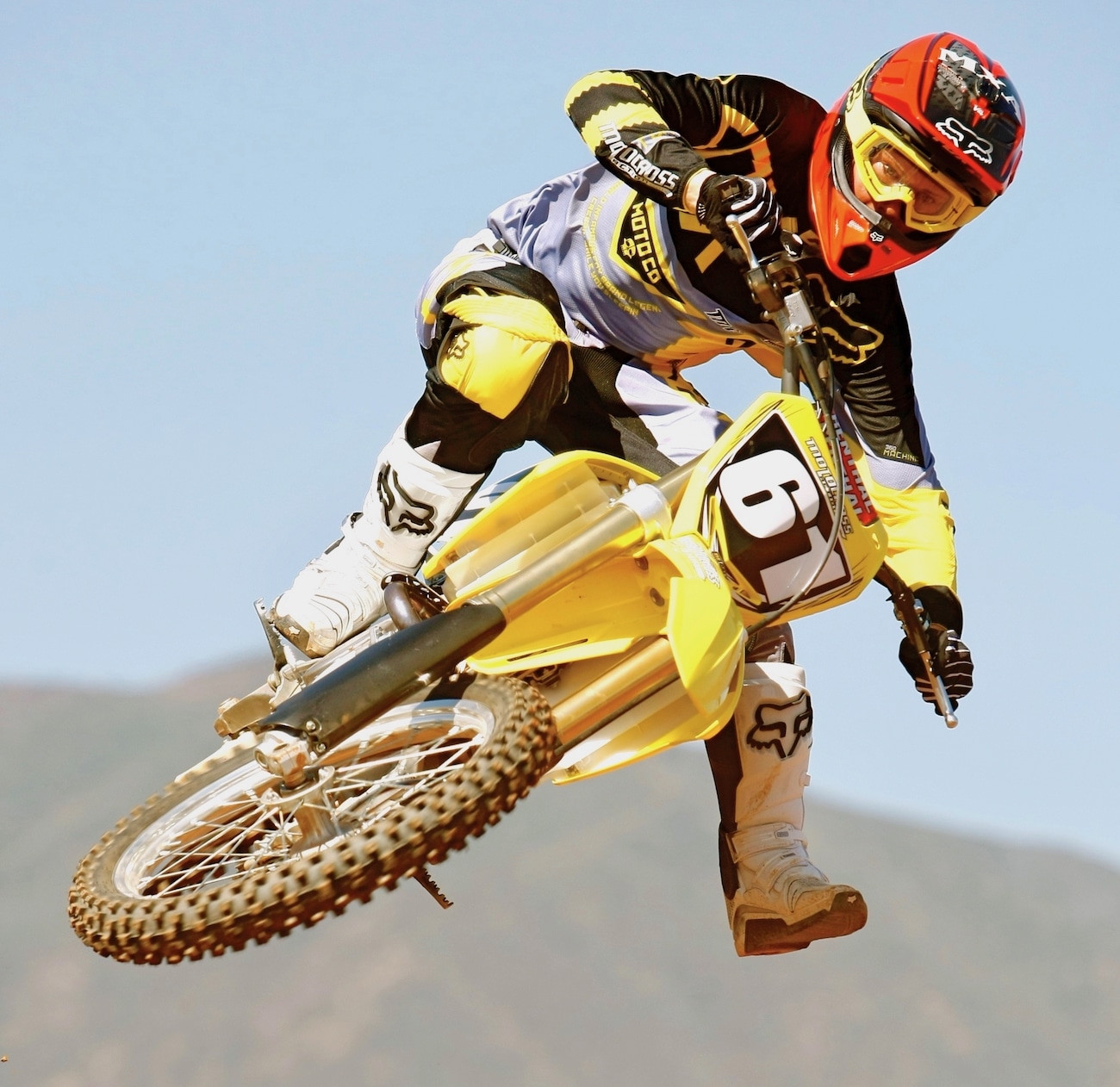 Although similar in aesthetics to the previous two years, the 2013 RM-Z250 has a lighter piston, new tranny, EFI coupler options, and Showa SFF?forks (among other updates).
Although similar in aesthetics to the previous two years, the 2013 RM-Z250 has a lighter piston, new tranny, EFI coupler options, and Showa SFF?forks (among other updates).
Q: HOW WOULD WE DESCRIBE THE 2013 SUZUKI RM-Z250 ENGINE?
A: This is the first revised engine that Suzuki has released since the 2010 RM-Z250. We won’t say that it was a long time coming, because the 2010-2012 engines were very good (second best by most test rider estimations), but we knew in our heart of hearts that Suzuki could improve their powerband. That probably sounds like a bold statement, but the first-generation RM-Z250 engines (2004-2009) were bottom-end dwellers. They had no equal from 6000 to 8000 rpm, but once in the midrange, the engine took a nosedive faster than Barry Bonds’ career.
Suzuki pumped up the jams on the 2010 engine, relocating the power into the midrange. It was a wise choice. Long pigeonholed as an entry-level engine, the new found powerband of the 2010 RM-Z250 suddenly became popular with faster riders. Beginners could still manage the midrange hit, but those more speed-inclined could take advantage of the strong pull into the top end.
To effectively describe the 2013 Suzuki RM-Z250 engine is to say that it mirrors the 2012 engine—only it’s not quite as powerful. While it’s true that throttle input is crisper and more reactive, the powerband gives up a bit of the unbridled mid-and-up surge that we loved last year. Most people won’t notice much of a difference between the two engines, but trust us when we say that last year’s bike had more gusto. Don’t despair, though; the 2013 RM-Z250 can be made better than the 2012 in less than 30 seconds. Best yet, it’s absolutely free. How so? Read on.
Q: HOW CAN THE 2013 SUZUKI RM-Z250 POSSIBLY BE IMPROVED IN LESS THAN 30 SECONDS?
A: When you purchase a 2013 RM-Z250, you’ll be given an owner’s manual, a Suzuki hat and two additional EFI couplers. Put your fancy new hat on and use the owner’s manual to locate the stock coupler (on the left side of the bike tucked in behind the radiator and shroud). Pull the rubber coupler guard from its mount, remove the guard, unclip the stock EFI coupler and install the optional white coupler. All you have to do is plug it in.
The white coupler, also known as the lean or aggressive coupler, decreases fuel delivery by 4 percent. It is a noticeable change, all the more evident on a track where the dirt is disced deep. We would like to point out that of all the 250 four-strokes that come with pre-tuned EFI adjustments, the RM-Z250’s couplers are the most noticeable. That says a lot.
Every test rider preferred the lean coupler. Throttle response was improved, and the somewhat flat feel of the powerband was livened up considerably. The kicker? The 2013 bike with the lean coupler was superior to last year’s RM-Z250. The rich coupler (gray in color) was our least favorite option and only worked moderately well on rock-hard tracks or in the hands of beginners.
Q: HOW DOES THE 2013 SUZUKI RM-Z250 RUN ON THE DYNO?
A: Both the 2012 and 2013 engines are essentially the same from 6000 rpm to 8000 rpm, then the 2013 RM-Z250 loses almost a horsepower from 8100 rpm until 12,000 rpm. At that point on the dyno, both engines intersect and the race to the top begins. At 12,500 rpm, the 2013 RM-Z250 is still holding strong while the 2012 bike falls off significantly. The 2013 RM-Z250 makes 38.01 peak horsepower (the 2012 model made slightly more at 38.12) with maximum torque at 19.29 foot-pounds (compared to 19.85 foot-pounds last year). Obviously, the 2013 RM-Z250 makes less power than the 2012 model, but the numbers are moot on the track.
Compared to all the other 2013 bikes, the RM-Z250 falls fourth in line (behind the KTM 250SXF, Kawasaki KX250F and Honda CRF250). Compared to the KTM and Kawasaki, the Suzuki’s dyno numbers are weak. Still, the Suzuki is the best of the rest in terms of a strong and consistent dyno curve.
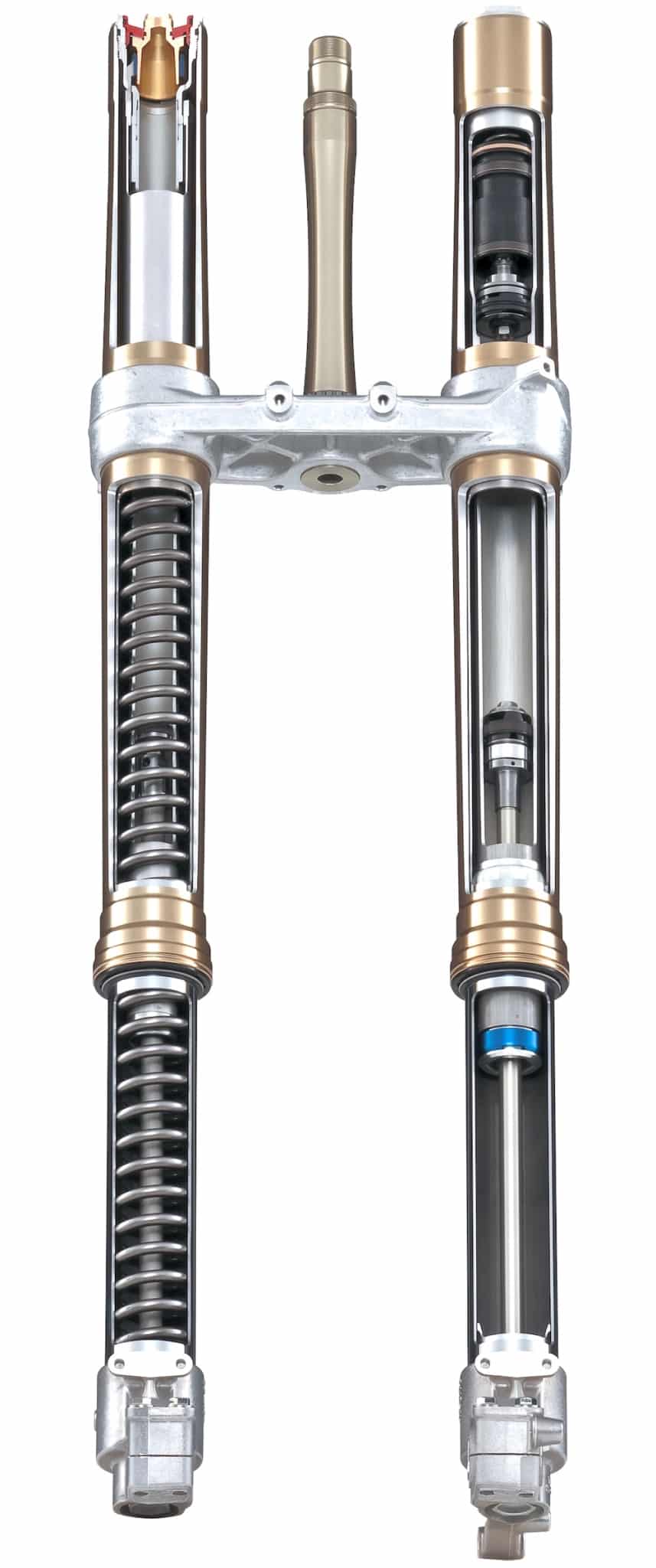
Suzuki joined the Showa Separate Function fork fray. It is an improvement over their previous offerings, but that’s not saying much.
Q: WHAT IS THE GREATEST ATTRIBUTE OF THE 2013 SUZUKI RM-Z250?
A: Any Suzuki RM-Z250 owner would give a glowing review of the bike’s handling tendencies. The RM-Z250 has no equal when it comes to cornering. It can hit inside lines with very little rider input, but also blast around sweeping turns with relative stability. Thanks to stiffer fork legs and decreased flex, more advanced riders can push the limits of the bike’s capabilities in transition from braking to corner entrance.
The only downside to the RM-Z250’s geometry is the possibility of headshake. The 2013 setup is the most stable RM-Z250 since Suzuki developed their own chassis (after the messy Kawasaki/Suzuki alliance of 2004); however, the front end still trembles like a teenager on an energy-drink binge down fast straights where the front end is loaded. The best solution is to drop the forks down in the triple clamps, tighten the steering stem nut and make sure that there is a proper amount of race sag. Even so, every MXA test rider was willing to trade some straight-line stability for the RM-Z’s precise cornering ability.
Q: WHAT DID WE DO TO IMPROVE THE 2013 SUZUKI RM-Z250?
A: It won’t take someone with deep pockets to vastly improve the RM-Z250 because, quite frankly, the bike doesn’t need much improving (short of an infusion of horsepower). You can find happiness with these changes.
(1) Exhaust pipe. Suzuki revised the stock exhaust system and stated in their marketing jargon that it “meets the new FIM sound limits.” In layman’s terms, this means that the RM-Z250 exhaust is restricted to the point where it affects performance. If you really want the engine to sing, pour a few Ben Franklins into an aftermarket exhaust.
(2) Clutch. Weak doesn’t begin to describe the Suzuki RM-Z250 clutch. Abusers are able to burn through a clutch pack in no time. Even those who avoid the clutch lever find it necessary to spend money on stiffer clutch springs. If you plan on keeping your bike for the long haul, then might we suggest a complete Hinson clutch system. It will pay off in the long term.
(3) Engine upkeep. Over the last two years, we’ve come to realize that the RM-Z250 engine goes sour fairly quickly. We haven’t had any major mechanical issues (aside from blowing a cylinder head gasket), but in our experience—and maybe it is just us—the Suzuki begins to lose power after about 20 hours. The solution? Stay on top of bike maintenance; in other words, oil services, checking valve clearance and constantly cleaning the air filter.
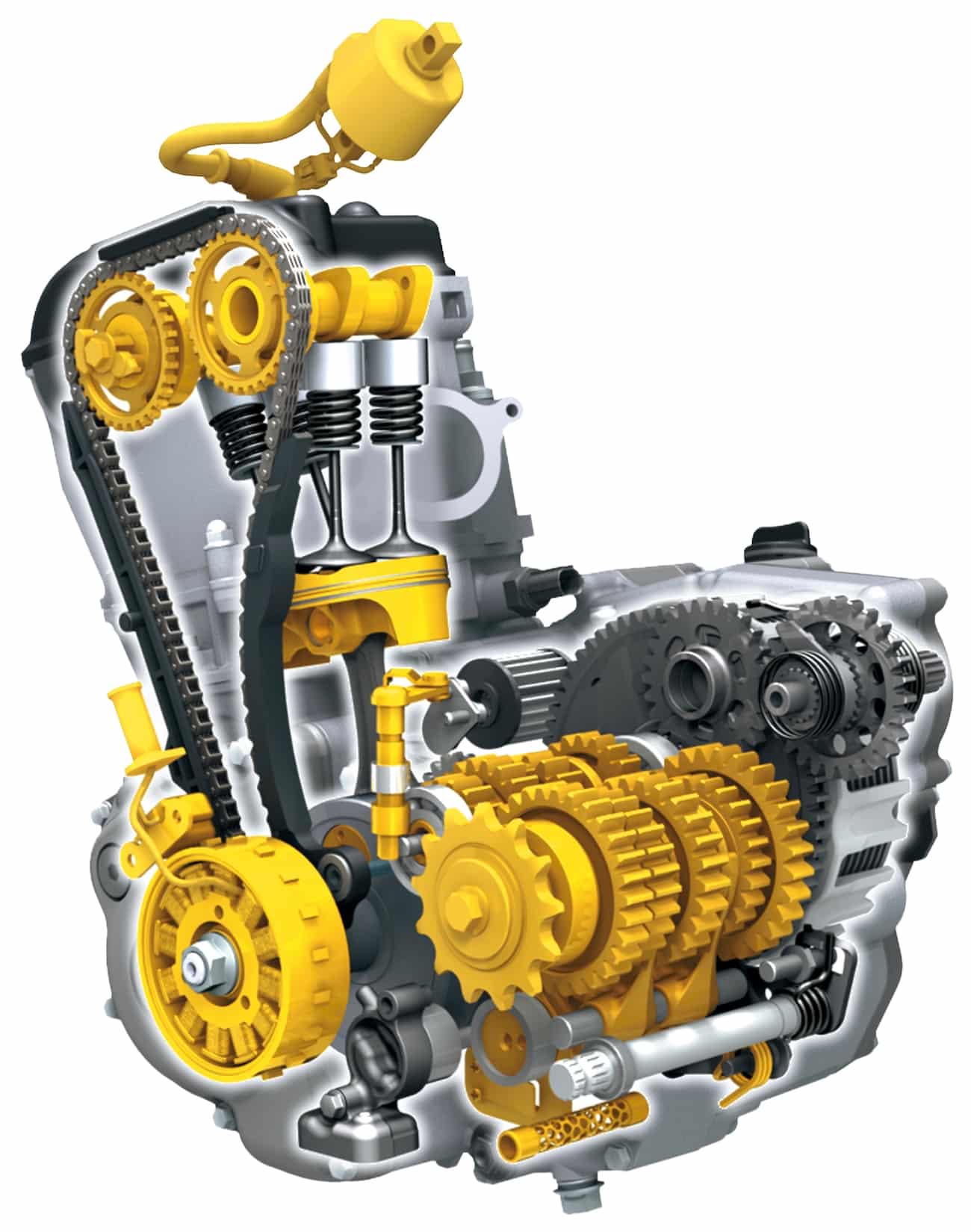 The RM-Z250 comes with three EFI couplers to change the mapping. We preferred the aggressive setting.
The RM-Z250 comes with three EFI couplers to change the mapping. We preferred the aggressive setting.
Q: WHAT DO WE HATE?
A: The hate list:
(1) Engine. It’s unfair to say that we hate the RM-Z250 engine. The engine is actually quite good. Unfortunately, compared to the green and orange bikes, the Suzuki is down three to four horsepower.
(2) Bolts. Let’s be serious. Suzuki needs to upgrade their bolts. We don’t know what grade of bolt Suzuki uses or who their supplier is, but they aren’t at the top of the bolt pyramid.
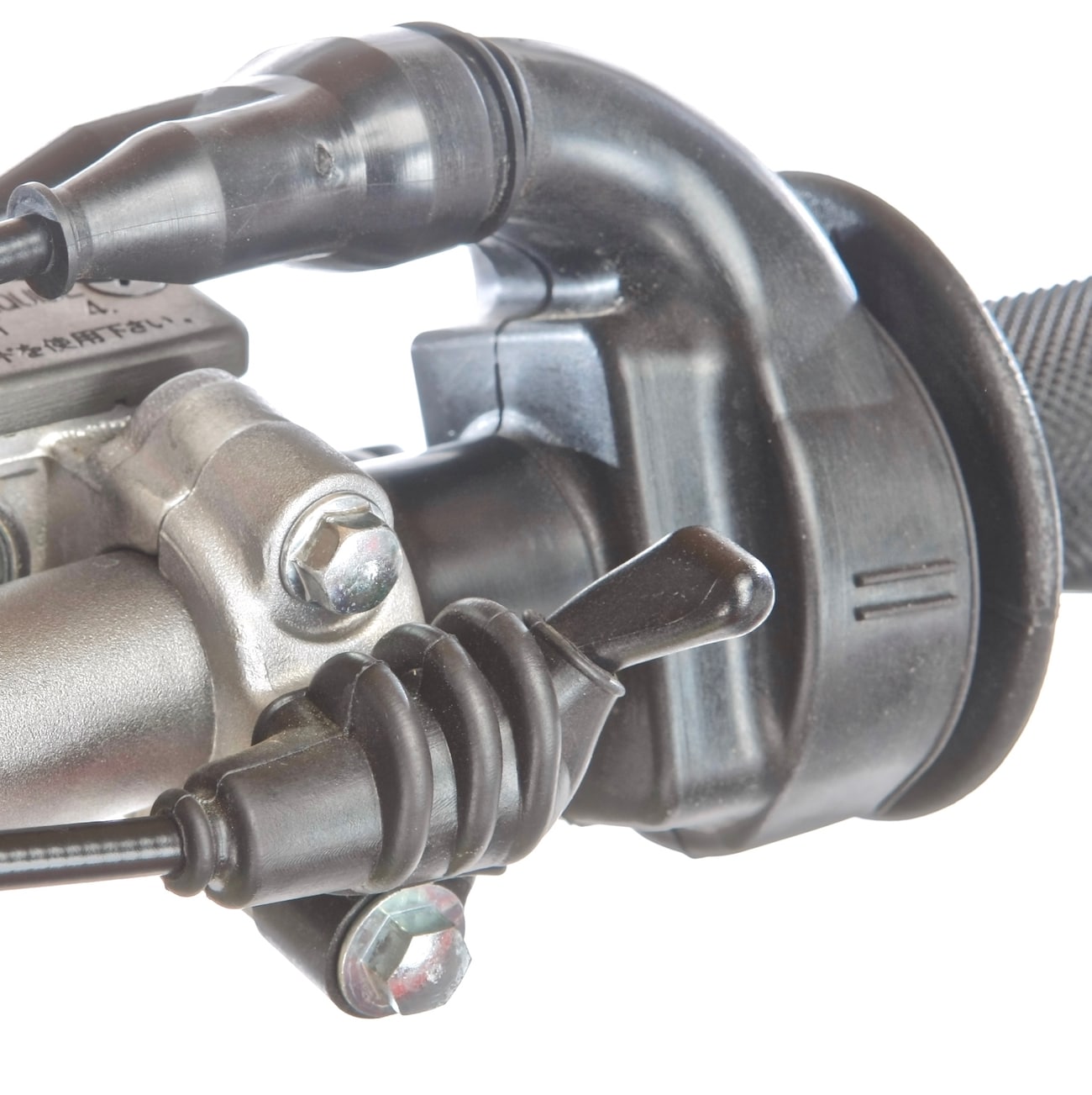 The RM-Z250 hot start lever will break off in the first crash.
The RM-Z250 hot start lever will break off in the first crash.
(3) Hot start. It’s easy to break and it’s ugly. Nuff said.
(4) Grips. We aren’t fans of welded-on throttle grips. They’re a nuisance to remove when it comes time to replace them. Good luck getting the grip off the throttle tube.
Q: WHAT DO WE LIKE?
A: The like list:
(1) Handling. Cornering the RM-Z250 feels like we’re in Tron racing on the grid. It will get to where you want to go in a hurry.
(2) Couplers. This is the first 250 four-stroke to come equipped with couplers that make a significant change to the powerband. We like the lean coupler.
(3) Shifting. The MXA wrecking crew finally likes the shifting traits of the RM-Z250?and all it took was an all-new transmission.
Q: WHAT DO WE REALLY THINK?
A: The MXA wrecking crew has always raved about the RM-Z250’s cornering prowess and, in recent years, we fell in love with the powerband. Now that it has competitive suspension and a transmission that isn’t made out of rubber, we’ve come to enjoy it even more. There’s no denying that the 2013 Suzuki RM-Z250 is a winner—unless you are looking for maximum horsepower.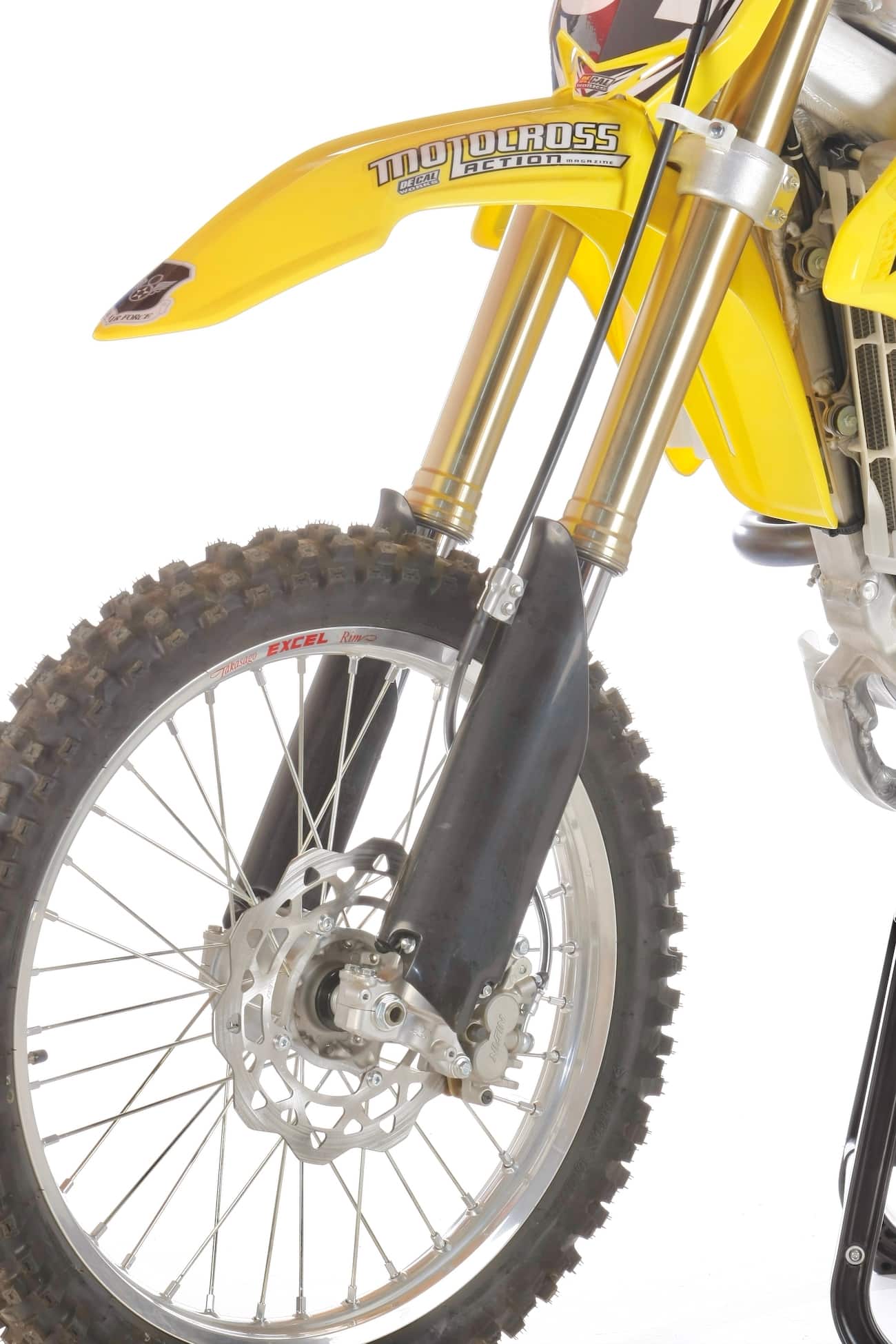
MXA’S 2013 SUZUKI RM-Z250 SETUP SPECS
This is how we set up our 2013 Suzuki RM-Z250 for racing. We offer it as a guide to help you get your own bike dialed in.
SHOWA SFF FORK SETTINGS
The big news for the Suzuki camp is that the 2013 RM-Z250 (and RM-Z450) now come equipped with Showa’s Separate Function forks (SFF). Better news for aspiring RM-Z250 owners is that the fork settings on the 250 four-stroke are considerably different from the RM-Z450’s. While the RM-Z450 forks have an extraordinary amount of fork oil and aren’t set up properly, the RM-Z250 forks are ballpark for most riders. Slower and smaller riders might find that the forks are too stiff for their tastes. Don’t be afraid to play with oil height and preload. For hardcore racing, these are MXA’s recommended 2013 Suzuki RM-Z250 fork settings (when changed, stock settings are in parentheses):
Spring rate: 0.99 kg/mm
Oil quantity: 340cc in right leg
Compression: 8 clicks out (11 clicks out)
Rebound: 9 clicks out
Preload: 6 clicks in
Fork-leg height: Flush with top clamp
Notes: The RM-Z250 is very sensitive to fork-leg height. We found that running the forks flush with the top triple clamp balanced the suspension and fixed the minor headshake that we experienced through fast and rough sections. We also tightened the steering stem to prevent excessive headshake. Note that when the forks are new, they need about an hour of ride time before they properly break in.
SHOWA SHOCK SETTINGS
For hardcore racing, these are MXA’s recommended 2013 Suzuki RM-Z250 shock settings (when changed, stock settings are in parentheses):
Spring rate : 5.5 kg/mm
Race sag: 105mm
Hi-compression: 2 turns out
Lo-compression: 14 clicks out
Rebound: 12 clicks out (14 clicks out)
Notes: The shock takes about an hour to break in. Continue to check the sag until the shock is completely broken in. Don’t discount the shock when it comes to handling. If the shock is too stiff or the race sag too little, the RM-Z can go from a sweet-handling machine to a yellow ogre. Balance the front and rear with careful setup.


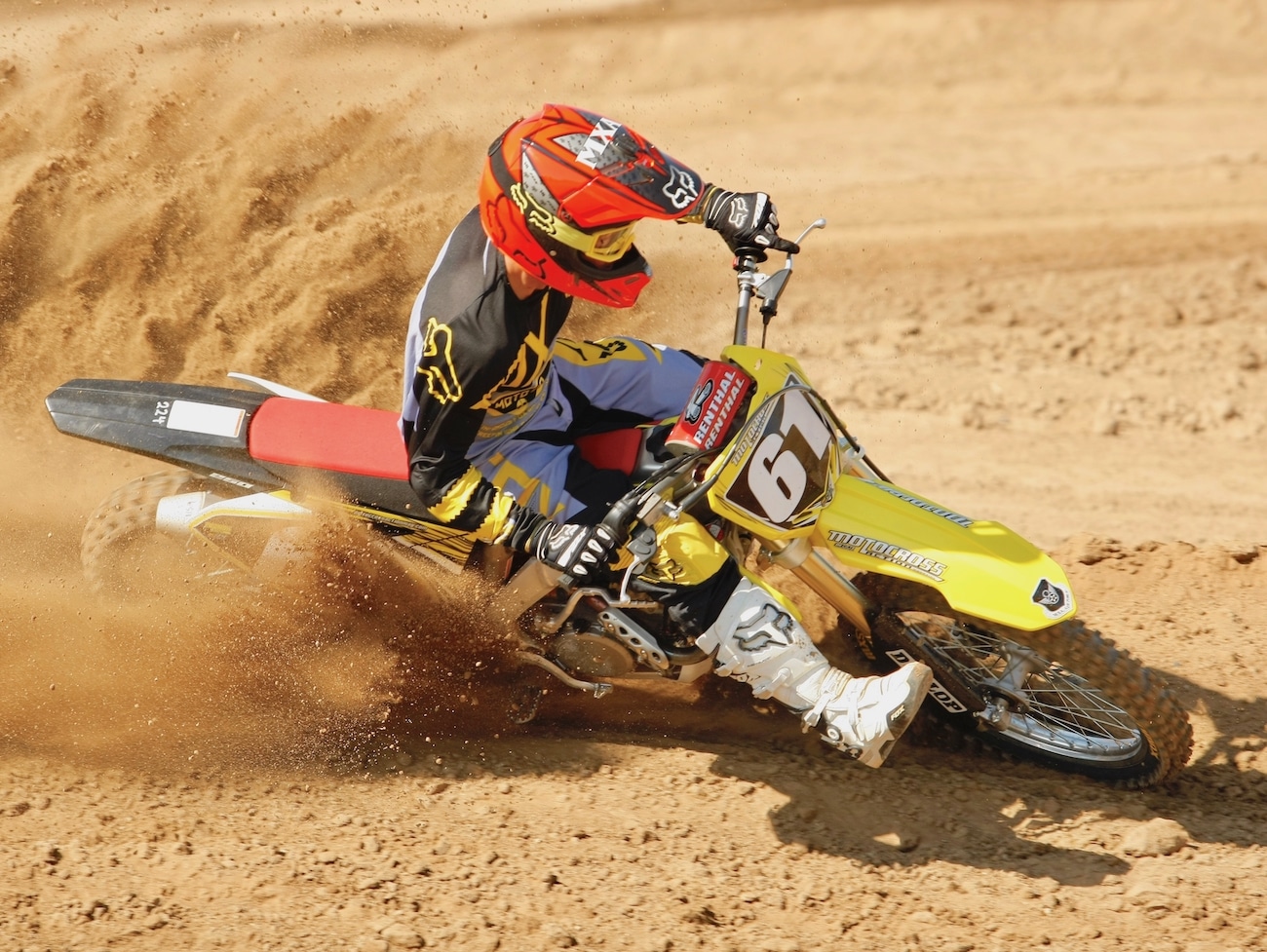
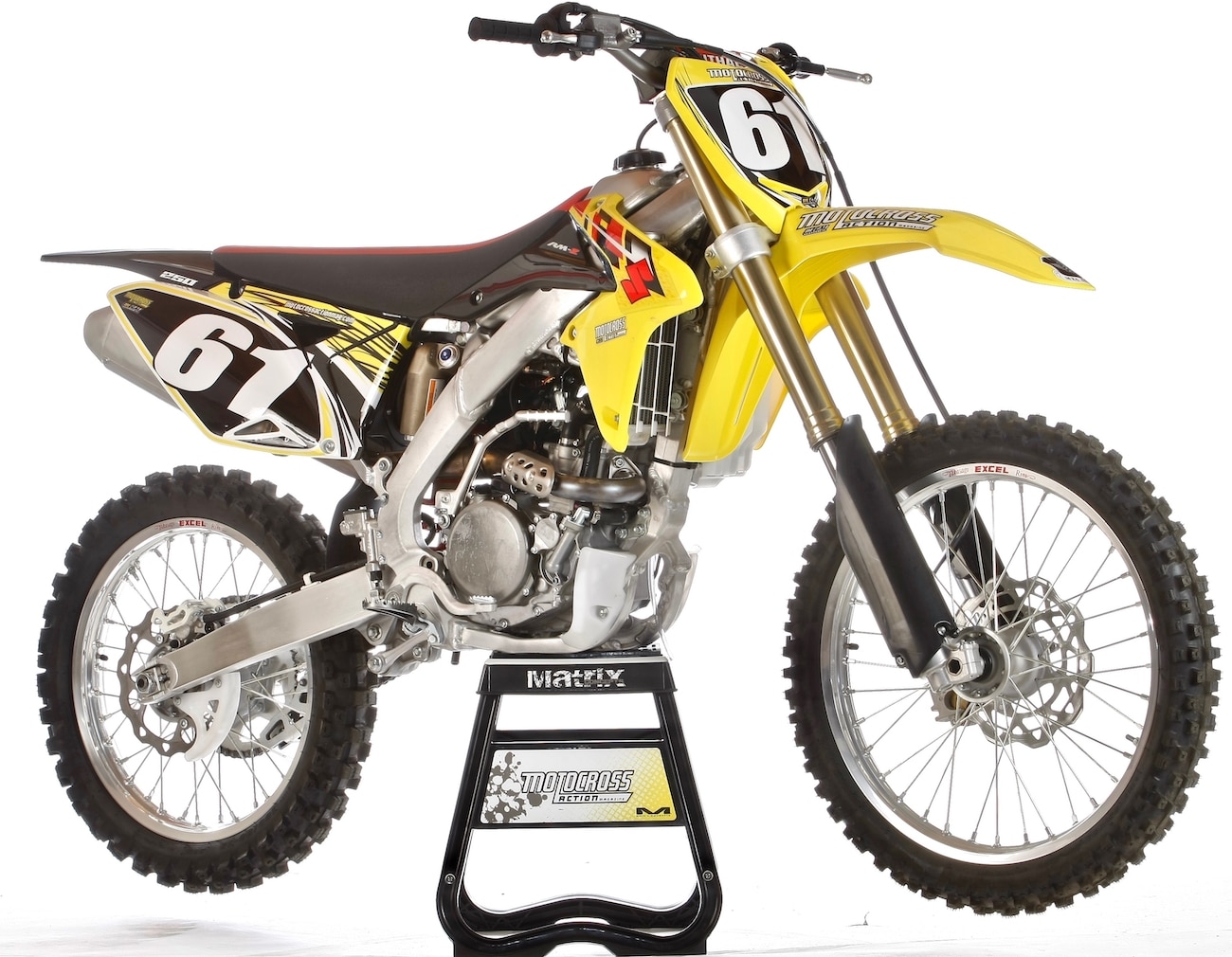
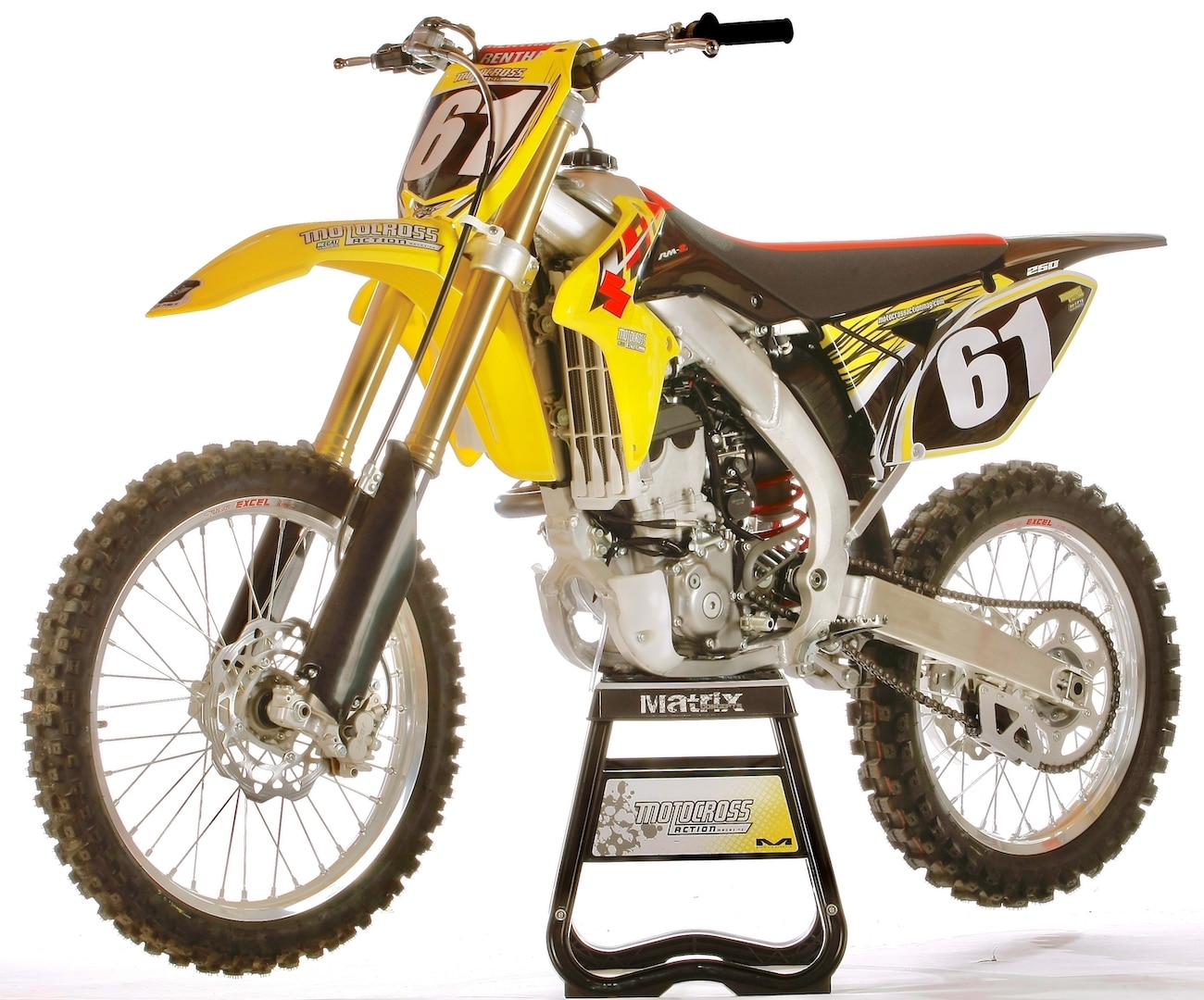

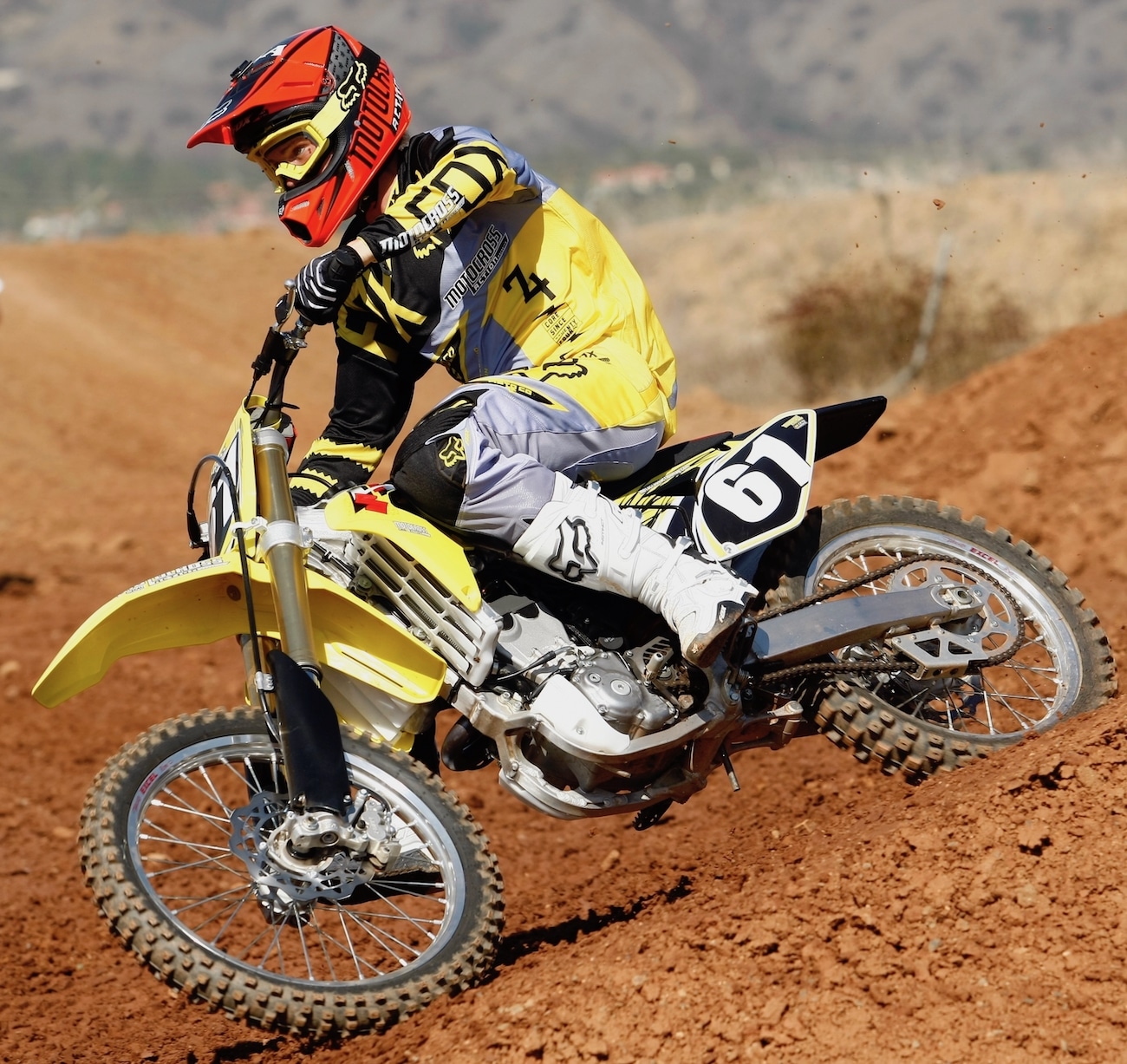



Comments are closed.